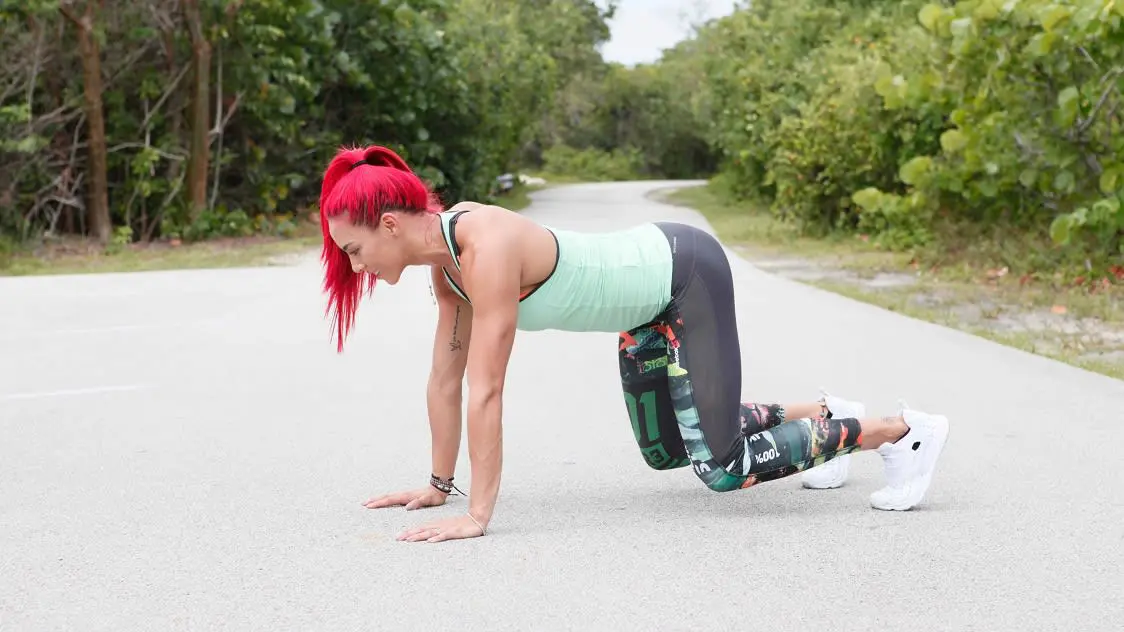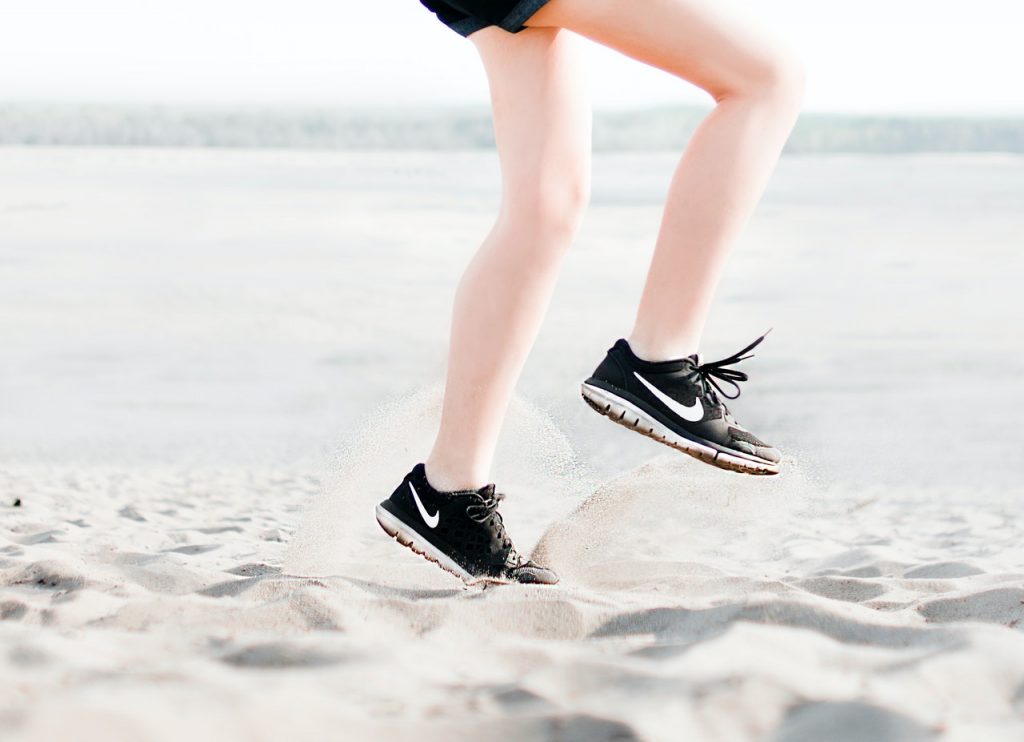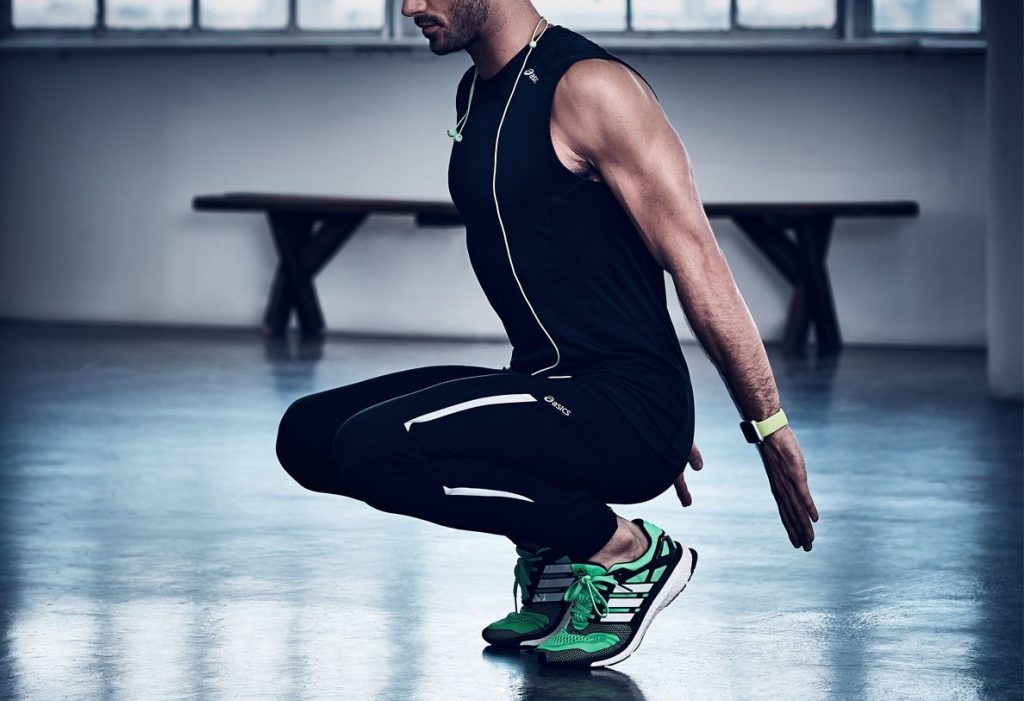
The best online fitness resource you'll ever need. We filter out the BS to ensure you meet your health and fitness goals!

The best online fitness resource you'll ever need. We filter out the BS to ensure you meet your health and fitness goals!

The bear crawl exercise is one of the best, most functional movements you can perform if you’re looking to improve core strength and full body agility.
You will often find them in bootcamp, HIIT and circuit style workouts, as they challenge and work a full array of muscles throughout the body. They also help to improve coordination, balance, stability and mobility, as well as bringing the heart rate up from the sheer amount of muscle mass being loaded.
Bear crawl holds are a simple, natural extension to the bear crawl that incorporate an isometric element, working the core. Think of them as a reconciliation between the traditional bear crawl and the plank.
First off, bear crawls use an awful lot of muscle mass, throughout the full body. They therefore also stimulate adaptation, thus growth and strength gains, through a lot of muscle mass.
Muscles used include the shoulders (deltoids), chest and back, glutes, quadriceps, hamstrings, and core. These will all be worked and strengthened through bear crawl holds, with particular emphasis on the core.
Any exercise that places significant load on a wide range of muscle mass will elevate the heart rate as the cardiovascular system struggles to supply the muscle tissue with oxygenated blood. Therefore, including bear crawls of any kind will represent a fantastic addition to your cardiovascular training.
Bear crawls and their variations require you to keep low to the ground, braced, with a lot of activity and fluidity through the hips, core and shoulders. Over time, this will improve mobility, loosening joints, stretching and opening soft tissue, and training the muscles to be stable at various points in their ranges of motion.
Bear crawl holds use multiple joints through taxing ranges of motion, all whilst dealing with a large amount of core stimulation. This is a recipe for perfect agility training, often called SARQ training (Speed, Agility, Reactivity and Quickness).
With the rise in functional fitness and training as a way to improve overall wellbeing and welfare, SARQ training has begun to take centre stage, with very good reason.

Whilst SARQ training used to be the preserve of pro athletes, members of the military or police forces, and other elite sportsmen, the health and fitness benefits on offer have begun to attract a far wider participant pool.
SARQ training comes with its own set of unique benefits, on top of the improved agility mentioned above, all of which will be achievable using bear crawl holds. These include:
Cardio routines do not need to engage muscles too much. Jogging and running, pedalling in place on an upright cycle, rowing… none of these use your full body, teaching you to engage your core and improve full body strength through mobility. Bear crawls will – they will show you how to better engage your core and all the other muscles involved.
Similarly, crunches and sit ups don’t use a full range of muscles. They don’t teach you how to best engage your core. Movements like bear crawl holds do.
Bear crawl holds and other, similar movements are quite fun. Performing them in a class is a bit like going to a grownup’s playground. Where jogging endless miles can get samey, SARQ training always has something new to offer, always challenges you in a range of ways, and generally keeps you more engaged in both your body and mind.
We all have busy lives and little time to waste. Fair enough. This doesn’t mean we should be doing less in the gym – we should just do more in less time. This means improving training efficiency.
Compounds are the answer – work lots of muscle mass at once, training your full body in just a few movements. Think about it.
What would take less time: performing five sets of squats, or performing 3 sets each on the hamstring curl, leg press, leg extension, back hyper, adductor and abductor machines, with some core work thrown in at the end?

Squats win. Compounds win.
Exercises like the bear crawl hold do exactly this – they allow you to train a lot of muscle mass in a very short amount of time. Pick 3-4 SARQ exercises and put them into a quick circuit.
You will build full body muscle, improve agility and mobility, and get your heart rate up, all in around 15-20 minutes.
Anybody involved in any kind of athletic endeavor – whether this is pro sports or simply a lifestyle choice – can benefit from SARQ exercises like the bear crawl hold.
Such agility drills can improve full body coordination, ward off injury, maintain limber, agile physiques, and can be to the changing physical and physiological demands of any periodized athletic training schedule.
In non-athletes, agility training and mobility has been linked to greater later life well-being, including increased mobility and decreased propensity to suffer falls.
The bear crawl is a surprisingly simple, relatively easy exercise, given the incredible benefits it can offer. You don’t need any equipment, though a wide, open space and something comfortable on which to train – like a yoga mat, for example – would be helpful.
To perform the bear crawl hold, simply:
There are a few common issues that are often seen when performing bear crawl holds. Try to avoid these in order to maximise the isometric hold and all the benefits that come with it.
First of all, don’t let your hips come up too high. They will often tend to rise up as you get tired and try to reduce the impact on your core and torso. Keep them roughly in line with your shoulders throughout, and don’t let them move.
Try to keep your back completely flat, in fact. You should be like a tabletop.
With this in mind, try not to allow your back to either sag or round. Brace your core to keep your hips and shoulders in one straight line. Maintain this solid core for as long as possible. If this only 10-20 seconds, that’s fine. This is where you’re at. Next time, aim for 15-25 seconds, then 20-30 seconds, and so on.
You may also be tempted to shift from side to side, placing more weight in your left hand and foot, or your right, or both, alternating. Again, try not to. If you want this kind of motion running through your core, that’s fine – switch to regular bear crawls. The purpose of the bear crawl hold is to hold yourself static, under control. Aim for this.
Performing your bear crawls like this, with good form, a sense of stillness and a braced core, will bring all the benefits we’ve run through today. Your core musculature will develop.
You will also learn to better engage and control your core. Mobility will be improved, as will athleticism, as will full body muscular engagement and control. Hypertrophy and strength gains will soon follow.